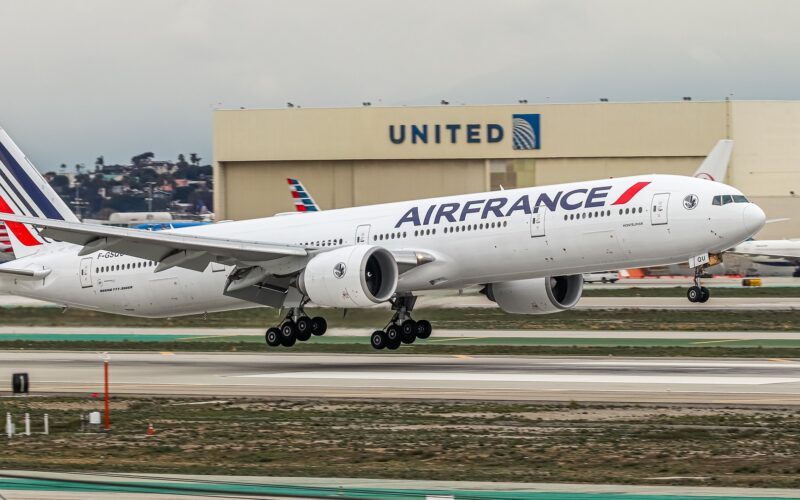FAA Issues Directive to Prevent Boeing 777 Horizontal Stabilizer Loss

The latest airworthiness directive (AD) by the United States (US) Federal Aviation Administration (FAA) looks to prevent the potential loss of the Boeing 777 horizontal stabilizer.
The FAA issued the AD on May 26, 2023, after it had received reports of “cracks found in the pivot bulkhead forward outer chord of a certain station”. Looking into the matter, the FAA found “higher bending stresses across the chord than originally assessed”, prompting the agency to publish the directive to address the potential cracking of the pivot bulkhead forward outer chord.
“The FAA is issuing this AD to address cracking in the STA 2370 pivot bulkhead forward outer chord. Such cracking, if not detected and corrected, could result in a severed pivot bulkhead outer chord, loss of horizontal stabilizer control, and loss of controllability of the airplane,” the regulator outlined.
The directive will require airlines operating Boeing 777-200, 777-200LR, 777-300, 777-300ER, and 777F aircraft to conduct repetitive detailed and high-frequency eddy current (HFEC) inspections of the pivot bulkhead forward outer chord of a certain station and longeron fitting for cracking and applicable on-condition actions.
The agency estimates that the directive will affect 223 aircraft registered in the US. Detailed and HFEC inspections will cost operators $4,390 per inspection, split into $850 for labor and $3,540 for parts.
However, the FAA has no way of estimating the number of aircraft requiring replacements in the event of an on-condition following an inspection, but it estimates the cost to be $40,950 per aircraft per one side ($3,230 in labor and $37,720 in parts cost). In addition, if the inspection results in a required on-condition detailed and open hole HFEC inspection, operators will have to spend $2,380 on labor per one side of a Boeing 777.
Applicable actions and the times of compliance are defined in the Boeing Alert Requirements Bulletin (RB) 777–53A0098 RB, dated April 5, 2022.
Changes to special tooling requirements and work-hour estimates
Several parties commented on the AD, including Air Line Pilots Association, International (ALPA), Air France, FedEx, and United Airlines. While ALPA supported the notice of proposed rulemaking (NPRM) without change, the three carriers stated their concerns to the FAA.
Firstly, FedEx argued that the AD should include revised detailed and HFEC inspection costs, as the inspections require parts totaling $3,540, while the replacement for the on-condition requirements is estimated to be 62 work hours. The FAA has agreed to revise the document.
Air France also requested to change the number of work hours it will take for operators to implement the directive’s requirements, arguing that Boeing’s Alert Service Bulletin (SB) “greatly underestimates the total manpower hours required to perform the modification”. Speaking from experience, the French carrier said it spent 1,200 hours completing a similar modification on both sides of a Boeing 777. Two other airlines it consulted with also spent 900 and 1,100 hours completing similar modifications.
All in all, Air France said that due to the incorrectly estimated time in these service bulletins, “resources were not available and the airplane was grounded for 3 weeks”. However, the FAA replied that there can be discrepancies between the estimated labor hours and operators’ work hours spent to comply with the directive and/or SB, as the FAA’s estimates are only representative of the tasks required by the AD.
Cost analysis “typically does not include incidental costs such as the time necessary for planning or time necessitated by other administrative actions,” the FAA added.
Furthermore, the French airline stated that Boeing’s SB said that no special Maintenance, Repair, and Overhaul (MRO) tools are required to perform compliance actions, yet the “range of reamers and drill bit diameters are not common and not part of the standard available tools for an MRO”. In response, the FAA said that it has “no definitive data regarding the standard MRO tools or what additional tools might be required”.
Air France’s third comment expressed that Boeing’s SB does not include clear access instructions, to which the US regulator responded that access instructions are not part of the compliance for the AD.
Meanwhile, United Airlines said that the AD should allow operators to inspect both sides of the aircraft to “know the full scope of the project and plan accordingly”. Boeing has already incorporated this change into its RB. While the FAA acknowledged the airline’s concerns, United “has not provided substantiation in support of these exceptions”.
As such, the FAA published the directive with “minor editorial changes”.
The AD is effective from June 30, 2023.
